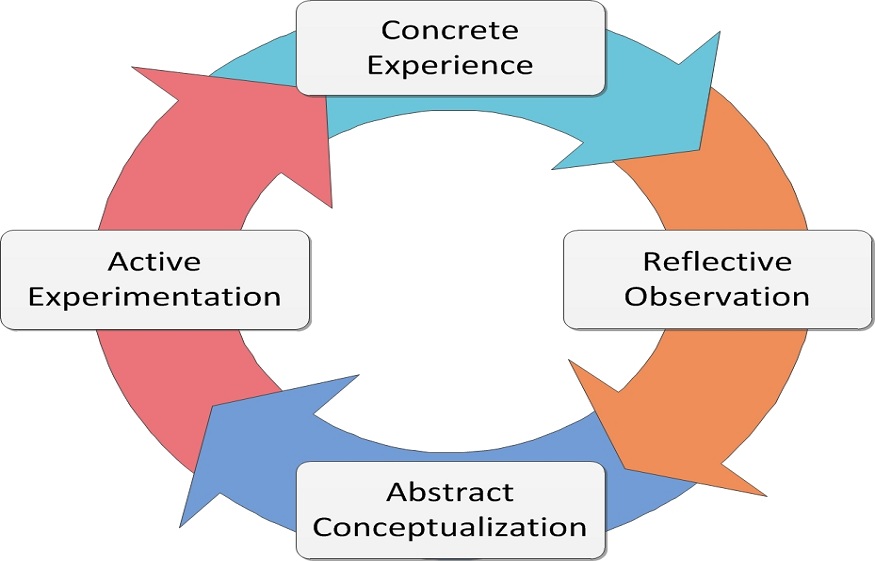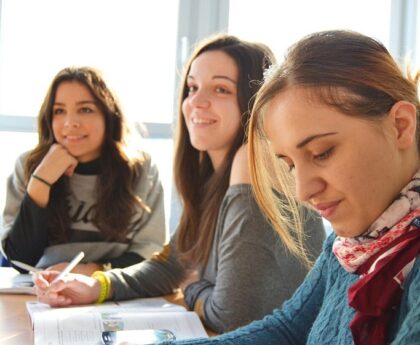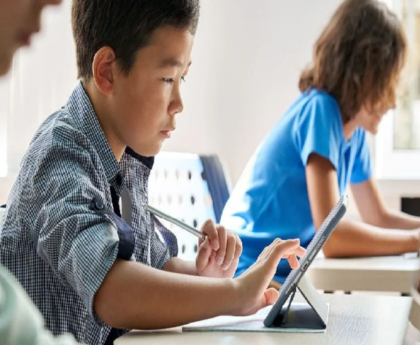American educational theorist David Kolb believes students are individual learners, each with unique learning styles and preferences. He also sees immense value in learning through direct experience—an idea that stems from earlier work by fellow forward-thinking theorists such as Maria Montessori.
In this article, we’ll dive deep into Kolb’s Experiential Learning Reflective Model, which he based on his innovative ideas and observations about student learning.
Understanding the four-stage learning cycle
Kolb first proposed his experiential learning theory (ELT) in 1984. He presented this theory in a four-stage cycle:
Concrete experience ↔ Reflective observation ↔ Abstract conceptualisation ↔ Active experimentation
Now, let’s break down these stages one by one.
During the concrete experience stage, students have a physical encounter or direct experience with an activity or situation. A student participating in a hands-on lab experiment, where they physically manipulate equipment and observe the results, is one example.
The reflective observation stage involves students looking back on their concrete experiences and making informed observations. For example, the lab student might try to identify what worked and what failed during their experiment.
Abstract conceptualisation is all about analysing the meaning of these observations. Following our example, the lab student might determine that their experiment failed because they used an incorrect measurement.
Active experimentation involves taking the theories discovered through abstract conceptualisation and applying them to a practical setting. Our lab student, then, would adjust their measurements and attempt the experiment again.
Keep in mind that the four-stage cycle doesn’t need to begin or end at any given stage, although it typically starts with concrete experience.
The reflective model: key features and benefits
An important element of Kolb’s reflective model is its focus on learning styles. According to Kolb, we can categorise learners into four groups that fall somewhere along the experiential learning spectrum:
- Accommodating (concrete experience ↔ active experimentation). These learners prefer an active, hands-on approach.
- Diverging (concrete experience ↔ reflective observation). These learners generate innovative ideas through exploration and reflection.
- Assimilating (abstract conceptualisation ↔ reflective observation). These learners take a logical approach to learning, focusing on ideas and concepts rather than people.
- Converging (abstract conceptualisation ↔ active experimentation). These learners prefer technical tasks and logical reasoning.
Recognising these different learning styles allows educators to provide opportunities that appeal to each student’s interests and strengths. This approach is fantastic for driving motivation and encouraging students to find meaning in their work.
Working together, the four-stage learning style creates a comprehensive learning experience that mimics the way we learn in the real world—making it a great way to prepare students for success in their future careers.
Applying the reflective model to the classroom
Applying Kolb’s reflective model to the classroom is simple. Some popular approaches include:
- Excursions/field trips,
- Science experiments,
- Roleplaying,
- Journaling,
- Classroom games,
- Internships and work placements.
These opportunities all provide students with genuine, meaningful experiences that will help connect classroom content with real-world scenarios.
The power of reflection
Kolb’s reflective model is all about learning through meaningful experience. Applying this approach to your learning and development is a powerful way to build critical skills for work and future life.





